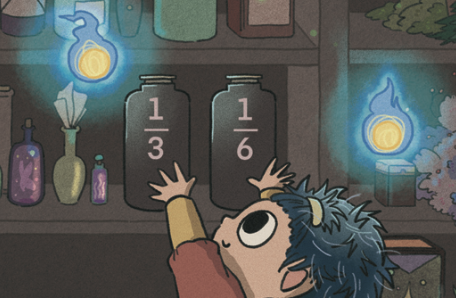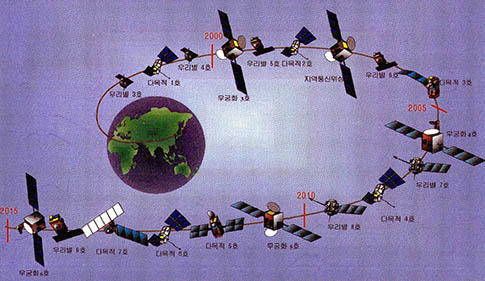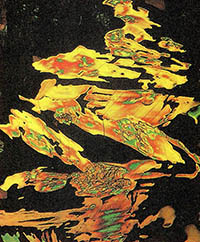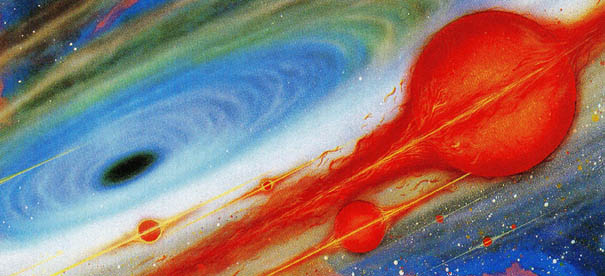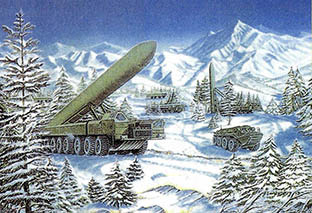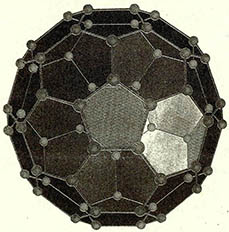
곡면상의 돔건축물을 창안한 벅민스터 풀러는 카리스마적인 성격의 소유자였다. 그의 강연은(필자도 한차례 들은 적이 있다) 이해하기 힘든 내용까지도 대단히 깊은 생각을 하게 만들었다. 이제 그의 이름을 따서 지어진 분자 하나가 과학자들을 흥분시키고 또한 언론을 떠들썩하게 하고 있다. 그 분자에 관해 짧은 글을 쓴다는 것은 마치 로마제국이 어떻게 멸망했는가를 넓이 3인치, 길이 5인치짜리 카드 한장으로 설명하는 것과 다를 바 없다. 에드워드 기본도 그보다는 더 많은 지면이 필요했다.
우선 분자는 원자들의 집합으로 정의된다. 만일 원자들이 동일하지 않다면 그 분자는 화합물이라 불린다. 어떤 화합물은 물처럼 간단한 반면 유기물질과 같은 화합물은 복잡하게 구성되어 있다. 따라서 화학자들은 보편적으로 큰 분자들의 구조를 파악하는데 힘든 시간을 보내왔다. 그러다가 널리 알려진 돌파구 하나가 찾아졌는데 이는 1865년 독일의 화학자인 프레드릭 어거스트 케큘 폰 스트라도니츠가 버스에서 잠들었다가 탄소원자 고리 하나가 뱀으로 변하여 자신의 머리를 칭칭 감는 꿈을 꾸면서부터였다. 케큘폰 스트라도니츠는 꿈에서 깨어나 벤젠의 원자들은 6각형 고리구조를 형성하고 있다고 확신하였다.
1984년엔 또다른 유형의 돌파구가 생겼다. 휴스턴시에 있는 라이스대학의 리처드 스말리, 봅 컬 그리고 영국의 화학자인 헤리 크로토는 거대한 탄소별들을 만드는 것처럼 보이는 탄소원자고리들의 구성방법을 실험실에서 재생하고 싶었다. 레이저 광선으로 흑연을 쏘았을 때 크고 안정된 탄소분자들이 만들어지는 것이 발견됐는데 이들은 과거에 알려진 그 어떠한 탄소유형과도 다른 것이었다.
이는 탄소60이라 불리는데 그 이유는 60개의 탄소원자들이 스스로를 6각형과 5각형으로 배열시켜 축구공을 연상케 하는 모양을 갖춘 때문이었다. 또한 벅민스터 풀러의 곡면상 돔과도 닮아서 벅민스터풀러렌 혹은 버키공이라는 이름이 생겨났다. 바로 이 탄소60은 '사이언스' 잡지에 의해 '올해의 분자'로 선정되었다.
스말리 등의 실험결과를 검토한 후에 물리학자들인 도널드 허프만과 볼프강 크레시머는 지난 1982년 그들이 불활성가스로 갇힌 흑연을 전자적으로 증발시켰을 때 우연하게도 벅민스터풀러렌이 만들어진다는 것을 알게 되었다. 이 기술이야말로 대량의 풀러렌을 생산하는 방법으로 후에 밝혀졌다. 또 다른 기술들도 개발되고 있어서 그 올해의 분자는 올 한해 동안에 꽤나 활약하고 있는 셈이다. 풀러렌에 관한 연구는 이곳저곳에서 진행중인데 과학자들은 이 새로운 분자에 대한 보다 많은 것을 파악하고 또한 풀러렌의 화학족보를 만들기 시작했다.
예를 들어 탄소60 내의 버키공들은 필름이 빛의 강도에 정비례하지 않는 광학적 특성을 부여한다. 서서히 짙어지는 대신 어느 순간 필름이 불투명체로 바뀌는 것이다. 언젠가 이 특성으로 말미암아 강력한 빛으로부터 우리 자신이나 장비들을 보호하는 방안이 강구될 수 있을 것이다. 빛의 효율적인 조절은 다방면에서 또 다른 유용성을 제공한다. 광학적 스위치와 변조기를 사용한 광섬유 통신망은 흥미로운 가능성 중의 하나다. 언젠가 우리는 광학적 디지털 컴퓨터를 제작할 수도 있을 것이다.
버키공들을 압축하면 다이아몬드가 되지만 '흥분된'풀러렌들은 더욱 흥미롭다. 칼륨 루비듐과 같은 알칼리성 금속의 원자들이 탄소분자들 사이의 공간을 가득 채웠을 때 그들은 초전도성을 획득하기 때문이다. 일본에선 화학자들이 분자들을 접속시켜서 매우 안정되고 전자적으로 중성의 속성을 지닌 중합체를 만든다.
산소와 같은 가스분자들은 나무상자에 넣어진 오렌지처럼 가득찬 '버키공'들의 8면체 공간사이를 채울 수 있다. 이렇게 가득찬 풀러렌들은 일정한 크기를 유지하는 것으로 밝혀졌는데, 즉 가스분자들은 아주 크거나 아주 작을 수는 없다는 것이다. 이와같은 특성을 이용한 제품으로는 특정한 가스만이 침투할 수 있는 피막이 있을수 있다. 풀러렌들은 축구공을 닮고 내부가 텅비어 있어서 '철장'이라고 불릴 수 있다. 과학자들이 이 철장의 밖을 다른 원자들로 칠하지 않을 때면 철장 안에 무엇인가를 집어 넣으려 한다. 칼륨, 티탄, 철, 스칸듐 등이 이용되었고, 과학자들은 이 생각 저 생각에 끊임이 없다.
거대한 탄소분자내에 다른 원자를 가두어놓는 것이 무슨 소용이 있을까? 분자안에 무엇이 있느냐에 따라 풀러렌들은 좋은 화학촉매제가 되거나 유용한 자석특성을 지닌다. 또한 이와같은 방법으로 겉을 칠한 약품은 신체의 다른 부분에 해를 끼치지 않은채 종양부분으로 전달될 수 있다. 풀러렌들을 철장처럼 사용한 또다른 많은 가능성을 탐구하기 위한 노력은 계속되고 있다.
'버키관'에 관해서도 많은 목소리들이 있어 왔다. 버키관이란 공모양이 아닌 나선형구조의 관모습을 한 풀러렌으로 생각되고 있다. 우리의 기대는 버키관이 튼튼한 망을 만들 것이라는 점이다. 문제가 있다면 일부과학자들이 주사식 터널링 현미경을 이용하여 풀러렌들의 사진을 찍는데 성공했다는 것이다. 그런데 버키공들은 있었으나 버키관들은 찾을 수가 없었다.
그러는 중에도 풀러렌에 한한 연구는 과학공상소설을 즐기는 이들을 흥분시킬만한 실용성을 찾는데 초점이 맞춰지고 있다. 언젠가 우리 인간은 로켓을 지구로부터 쏘아올리고 계속 진행시키는데 휘발유를 필요로 하지 않을는지 모른다. 대신 멀지않아 풀러렌을 사용할지 모르는 것은 현재 우주선을 추진하기 위한 가속이온광선을 개발하는데 풀러렌이 연구되고 있는 까닭이다.
Buck minster Fuller, who invented the geodesic dome, had a charismatic personality.
When he gave a lectured(I heard one once), it was mentally stimulating, even if difficult to understand. Now a molecule named in his honor is stimulating scientists-and the media. Trying to write a very short article about that molecule is a little like trying to explain on a 3-by-5 card exactly how the Roman Empire collapsed. Edward Gibbon took considerably more space to do that.
To begin with, a molecule is a group of atoms. If the atoms are not all the same, the molecule is called a chemical compound. Some are simple, like water, and some are complex, like most organic compounds. Chemists had a hard time deciphering the structure of some of the larger molecules. One well-known breakthrough occurred in 1865 when German chemist Friedrich August Kekule von Stradonitz fell asleep on a bus and dreamed that a chain of carbon atoms turned into a snake that coiled around to grab its own head. Kekule von Stradonitz awoke sure that in benzene the atoms formed a hexagonal ring structure.
In 1984 there was a different kind of breakthrough. At Rice University in Houston, Richard Smalley, Bob Curl and British chemist Harry Kroto wanted to reproduce in the laboratory the way that chains of carbon atoms seemed to be made in giant carbon stars. When they hit graphite with laser beams, they found that large, stable carbon molecules were formed, different from any type of carbon yet seen.
This was called carbon 60, because 60 carbon atoms arrange themselves in hexagons and pentagons to form a shape remarkably reminiscent of a soccer ball. Or, of a Buckminster Fuller geodesic dome-hence the name Buckminsterfullerene, or "buckyballs." This is the giant named "Molecule of the Year" by Science magazine.
After studying the results of Smalley's lab, physicists Donald Huffman and Wolfgang Kratschmer discovered that back in 1982 they had accidentally made a Buckminsterfullerene when they electronically evaporated graphite enclosed in inert gas. This technique proved to be a way of producing large quantities of fullerene. Other techniques have been found, so the molecule of the year is doing great this year, too. Fullerene research is going on all over the place, with scientists discovering more and more about the new molecule and starting a whole chemical family of fullerenes.
For instance, buckyballs of carbon 60 give film optical properties that are not linearly dependent on the intensity of the light. Instead of slowly getting darker, the firm-at a definite point-becomes opaque. Eventually we may have better ways to protect ourselves and our equipment from high-intensity light. Efficient regulation of light is a property that has many other practical uses. Fiber optic networks using all-optical switches and modulators are an exciting possibility. Some day we may have optical digital processors.
Compressed buckyballs make diamonds, but "doped" fullerenes are even more interesting, for they acquire superconductivity when atoms of alkali metals like potassium or rubidium are made to fill the spaces between the carbon molecules. In Japan, chemists glue the molecules together with palladium to make a polymer that's unusually stable, and electrically neutral.
Gas molecules like oxygen will fill the octahedral spaces between buckyballs that are packed together like crated oranges. It turns out that these packed fullerenes are selective-the gas molecules can't be too large or too small. A useful product would be membranes permeable only to certain gases.
Since fullerenes are like soccer balls, they are hollow, and can be called "cages." When scientists aren't coating the outside of the cage with different atoms, they're trying to put something inside the cage. They've used potassium, titanium, iron, scandium-the mind boggles.
What good is it to have a different atom trapped inside a big carbon molecule? Depending on what's inside, these fullerenes may make good chemical catalysts or have useful magnetic properties. It's also hoped that medicines coated this way could be delivered into a tumor without hurting the rest of the body on the way. Exploration is under way into the many other aspects of fullerenes used as cages.
There's been a lot of shouting about "buckytubes." These are thought to be fullerenes that form into helical structured tubes instead of balls. It is hoped they'll make strong fibers. The only trouble is that some scientists have succeeded in taking pictures of fullerenes with scanning tunneling microscopes. The balls are there, but when one group tried to find buckytubes, they couldn't.
In the meantime, research on fullerenes zooms on, with some hoped-for practical applications that thrill science fiction buffs. Some day humans won't have to burn rocket fuel to get off Earth and keep going. Maybe we'll soon be using fullerenes, for right now they're being studied for the development of accelerated ion beams to propel spaceships!
(c) 1992, Los Angeles Times Syndicate





